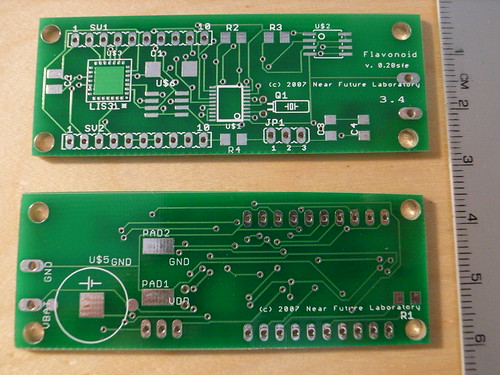Title
An API for Durable Affinity: Engineering Interfaces That Matter
Short Title
Why I’ve been engineering time, motion and touch sensors
Summary
In the era of an “Internet of Things” design for interfaces between humans and devices becomes increasingly important. The pervasive reach of the digitally networked world means it is likely that “things” — computational objects — play an increasingly consequential role in the establishing, maintaining and knitting together networked social formations. It is even conceivable to imagine that these sorts of things may themselves become lively, engaged social actors. How do we want to interface with these networked objects, and what sort of interface semantics would move computer-human interaction design out of the often awkward, frustrating Proterozoic era we currently inhabit, into a more habitable, lively, human-scaled era for computer-human interfaces?
Abstract
This paper is an explication of a theory object constructed to develop a computer-human interface syntax called “durable affinity”. Durable affinity describes a kind of semantic interface between a computational device and a human that effects control over the device, but through less typical, instrumental mechanisms. Durable affinity interface elements consist of real-time, embodied motion and touch. These elements are elongated in degree. Time scales are in the range of minutes to days, while embodied motion is measured in degrees of sustained activities and touch moves into the degree of holding rather than momentary contact. By using “human-scaled” interaction elements — real-time, embodied motion, and touch — durable affinity interfaces are an attempt to establish a niche of ambient, paced, calm computational environments.
In this experiment, three primary application programming interfaces (APIs) are developed for the purposes of investigating the creation of “durable affinity” — meaningful device-human interfaces that have more aesthetic semantics than typical instrumental device-human interfaces. These three APIs are real-time, motion and touch. The theory object is composed of a small, portable computational device designed and built by the author. The device contains interface technology for these three APIs. In effect, the device is a platform for experiments in durable affinity interfaces. By connecting the device to, for instance, a small microcomputer, the elements of time, motion and touch can be accessed as interface components. Essentially, the platform becomes analagous to a typical interface platform such as a computer mouse, only rather than using horizontal motion and button clicks, the platform uses time, three-dimensional movement, and touch as components of the interface syntax.
To further the semantics of durable affinity, these three APIs are elongated beyond what many computer human interfaces consider rational, or useful. In the durable affinity context, real-time is measured in days rather than milliseconds; motion is measured in sustained, body-based activity such as a long walk or hours at sport rather than the twitch of one’s wrist; touch is measured in the degree one would find with holding hands, rather than momentary contact found in typical instrumental computer interfaces.
For the purposes of this experiment, the device platform described above is used to create an email message receiving device to help explicate aspects of the durable affinity concept. Contained within the device is an email message sent from a significant other to the device’s human. The message very slowly reveals itself over a period of days if the device’s human creates an affinity relation with the object. In order to unlock and reveal the message, presumably a message with some semantic weight, the device’s human must hold it for periods of time as if it were a treasured gift, and bring it along while engaged in routine activities like going to work or shopping for groceries.
By deliberately creating such an enduring, sympathetic interface between a computer and human, this investigation finds ways to wrap a richer set of human-scaled semantics — beyond pure instrumentalities — around computational devices.
Motivation
The goal of this project is to investigate ways of establishing a positive historical relationship with objects by inscribing them with a level of meaning attuned to the register of human emotional sensibilities. There are a range of motivations for such a goal. Such motivations include: establishing lasting associations with things so as to avoid a culture of disposability; finding areas in which an increasingly crowded, fast-paced information space can have corners of calm, slow, ambient experiences; establishing niche areas of aesthetically and emotionally rich digital networked interactions.
This work is licensed under a Creative Commons Attribution-Noncommercial-No Derivative Works 2.5 License.
References
Chapman, J. 2005. “Emotionally Durable Design: Objects, Experiences and Empathy”, Earthscan.
Deschamps-Sonsino, Alexandra. Position Paper presented at NordiCHI 2006 workshop “Near-Field Interaction and the Internet of Things”, Oslo, Norway. URL (accessed December 2006): http://www.designswarm.com/NordiCHI_asonsino.pdf
Weiser, M. and Brown, J. S. 1997. The coming age of calm technolgy. In Beyond Calculation: the Next Fifty Years, P. J. Denning and R. M. Metcalfe, Eds. Copernicus, New York, NY, 75-85.

